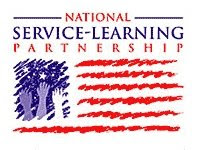Submitted by Marc Morgan, Academy Director, City Year
The high school dropout epidemic is a deplorable social issue facing America today. With places like Detroit and Cleveland graduating 24.9% and 34.1% respectively, gaps in graduation rates between urban and suburban areas like Baltimore (urban 34.6% and suburban 81.5%; 46.9% gap), and racial divides in rates with Blacks and Latinos rates lower than 60% and Whites and Asians above 75%, we must have an immediate call to action.
Research from John Hopkins University led by Dr. Robert Balfanz gives us insight to early warning indicators of attendance, behavior, and course performance (especially in Math and English) that could be used to help us create strategic and targeted intervention. These indicators would also allow us to use the 3rd, 6th, and 9th grades as milestones. Further findings from John Bridgeland's report Engaged for Success indicate that service-learning could be one of these targeted interventions especially at the high school and possibly middle school levels.
The time is ripe for the service-learning community to rally behind research, practice development and implementation, and advocacy around this epidemic. We could help bring a cure to this epidemic, but we also must keep in mind that service-learning will be just one of many interventions it will take to find the cure.
Subscribe to:
Post Comments (Atom)




3 comments:
Marc,
What role do you see after school programs /community based orgs playing in this call to action ?
-Heather
Great question Heather. I think after school programs, out of school programs, and community based organizations are all going to play central role to help increase graduation rates. Not all schools have service-learning coordinators which could be something that is filled by community based organizations or AmeriCorps type organizations.
We need everyone in the community to be part of the solution. It must be taken from a school by school, district by district basis, but if we are all focused on the early warning indicators we can all help move the needle and students can find their voice in multiple pockets of the communtiy.
No opportunity for student voice should be left on the table.
One other note, the statistics referenced comes from the Cities in Crisis report that can be found on the America's Promise web site.
Post a Comment